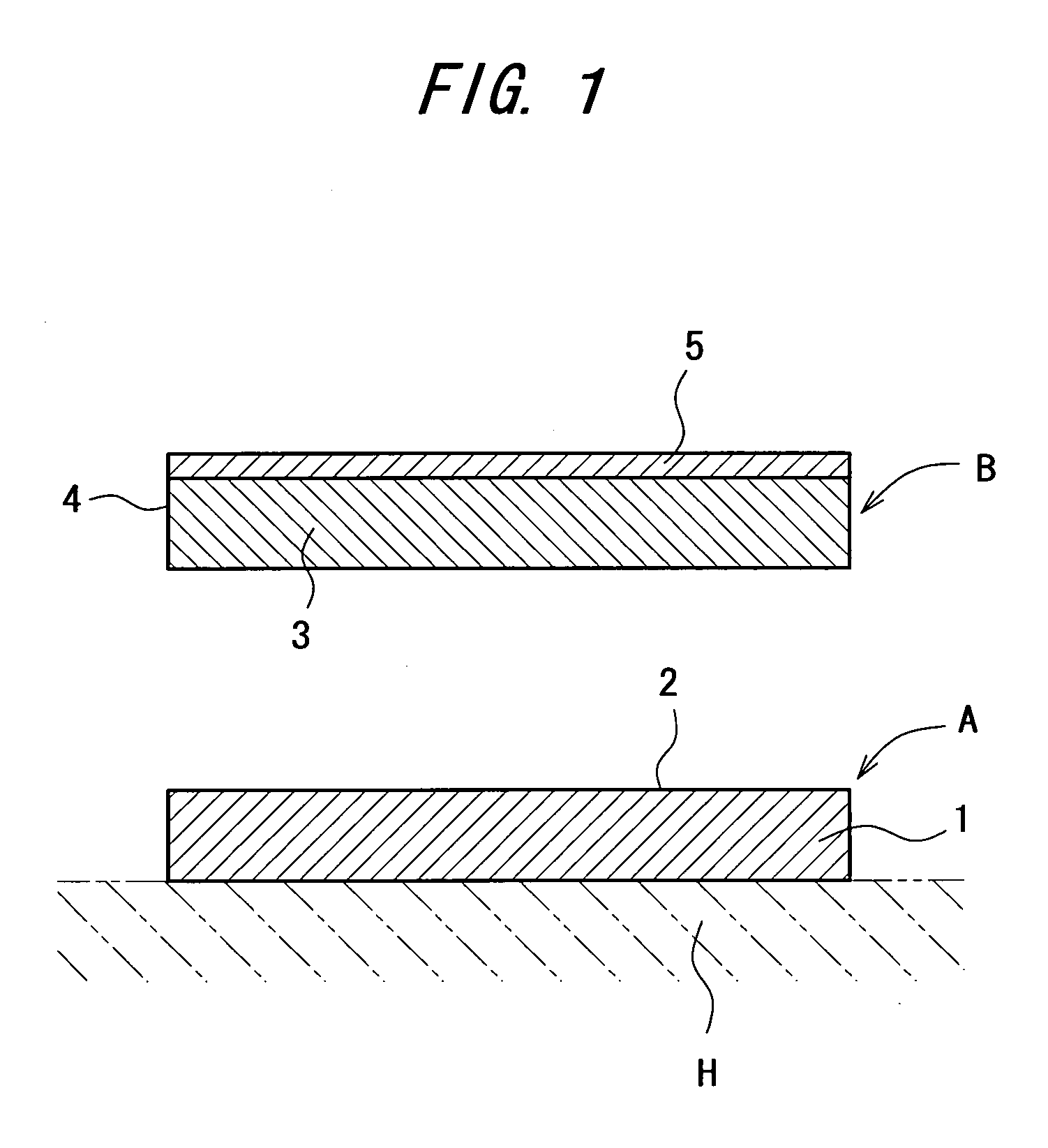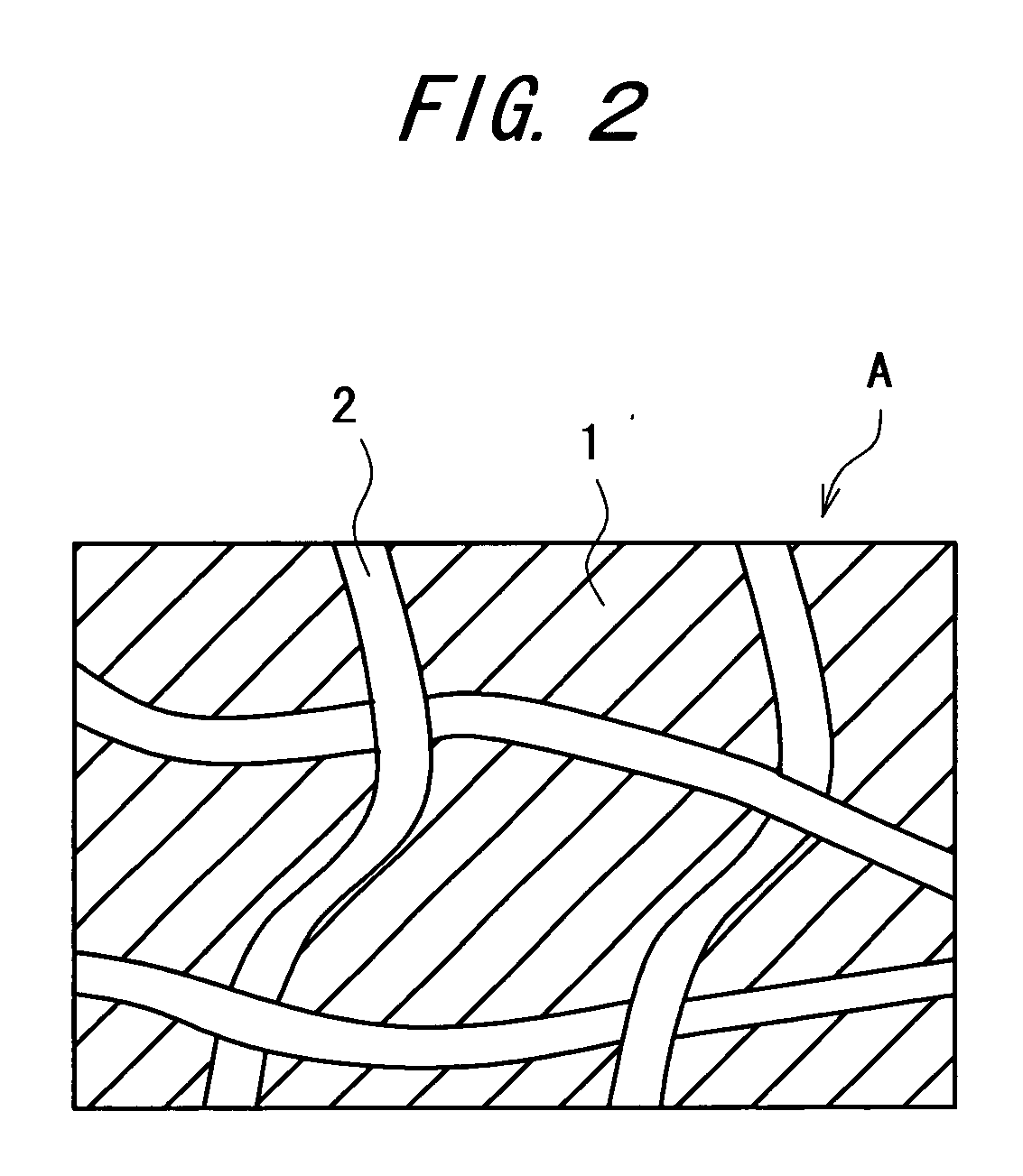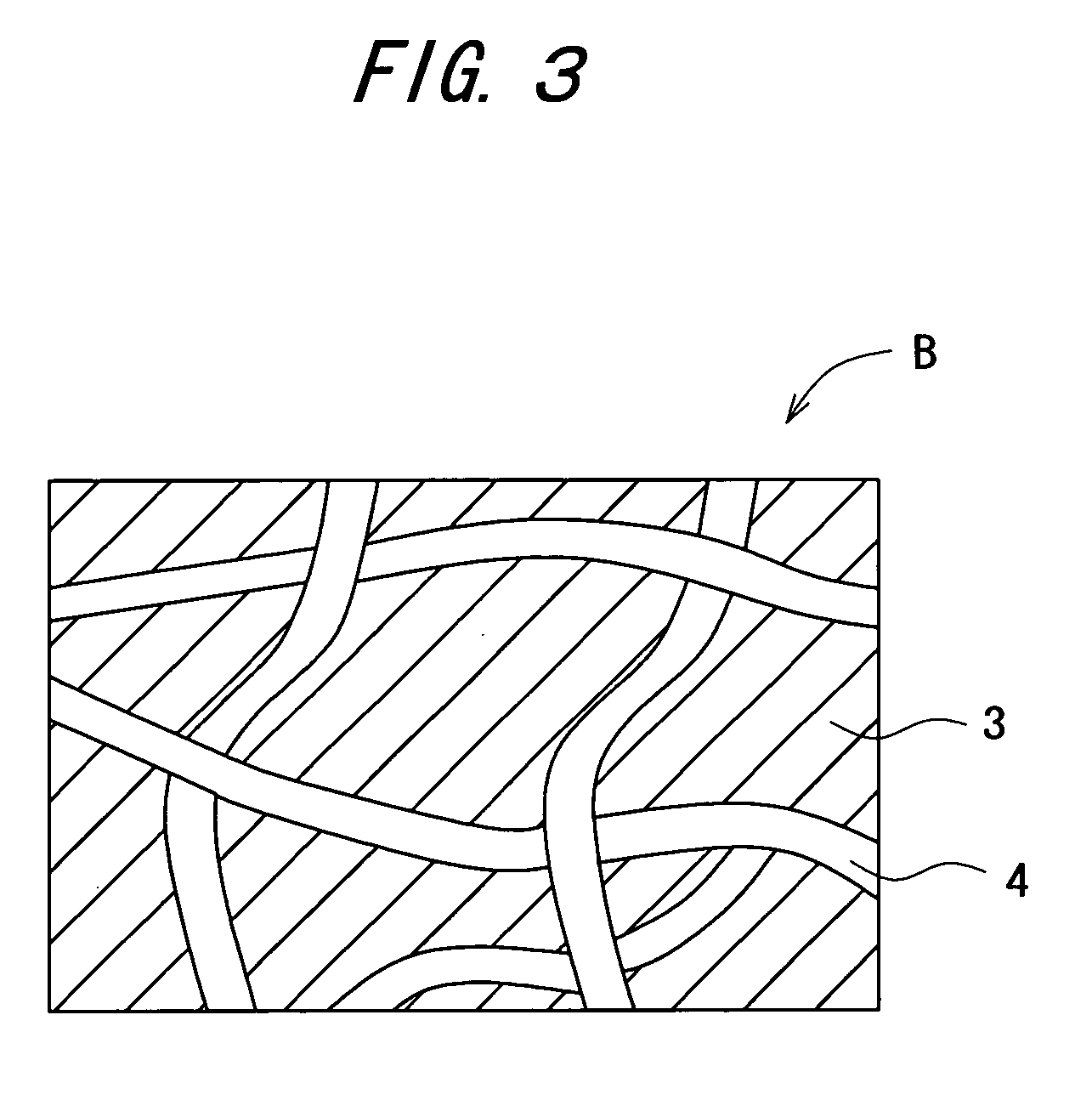Carbon dioxide external preparation and material for formation of carbon dioxide external preparation
- Summary
- Abstract
- Description
- Claims
- Application Information
AI Technical Summary
Benefits of technology
Problems solved by technology
Method used
Image
Examples
example 1
(Preparation of Base Agent)
[0074] A fluid hydrogel-like viscous material was prepared using 1 part by weight of malic acid as an acid, 3 parts by weight of sodium alginate as a thickener, and 96 parts by weight of purified water as water, and using a 0.4 mm-thick polyester nonwoven cloth as a polymeric three-dimensional network structure, 0.03 g of the aforementioned viscous material per square centimeter of the nonwoven cloth was impregnated therein, thus preparing a base agent.
(Preparation of Reactant)
[0075] A liquid reactant was prepared using 1 part by weight of sodium hydrogen carbonate as a carbonate, and 99 parts by weight of purified water as water.
[0076] The base agent and the reactant obtained were combined to produce a material for formation of carbon dioxide external preparation.
example 2
(Preparation of Base Agent)
[0077] A fluid hydrogel-like viscous material was prepared using 1 part by weight of succinic acid as an acid, 3 parts by weight of sodium alginate as a thickener, 0.1 part by weight of methylparaben as a preservative, and 95.9 parts by weight of purified water as water, and using a 0.4 mm-thick polyester nonwoven cloth as a polymeric three-dimensional network structure, 0.03 g of the aforementioned viscous material per square centimeter of the nonwoven cloth was impregnated therein, thus preparing a base agent.
(Preparation of Reactant)
[0078] A viscous liquid reactant was prepared using 1 part by weight of sodium sesquicarbonate as a carbonate, 3 parts by weight of sodium alginate as a thickener, 0.1 part by weight of methylparaben as a preservative, and 95.9 parts by weight of purified water as water.
[0079] The base agent and the reactant obtained were combined to produce a material for formation of carbon dioxide external preparation.
example 3
(Preparation of Base Agent)
[0080] A viscous material was prepared using 0.5 part by weight of citric acid as an acid, 3 parts by weight of propylene glycol alginate ester as a thickener, 0.1 part by weight of methylparaben as a preservative, and 96.4 parts by weight of purified water as water, and using a 0.4 mm-thick polyester nonwoven cloth as a polymeric three-dimensional network structure, 0.03 g of the aforementioned viscous material per square centimeter of the nonwoven cloth was impregnated therein, thus preparing a base agent.
(Preparation of Reactant Support)
[0081] A viscous material was prepared using 0.5 part by weight of sodium carbonate as a carbonate, 2 parts by weight of carrageenan as a thickener, 0.1 part by weight of methylparaben as a preservative, and 97.4 parts by weight of purified water as water, and using a 0.4 mm-thick polyester nonwoven cloth as a support, 0.03 g of the aforementioned viscous material per square centimeter of the nonwoven cloth was supp...
PUM
| Property | Measurement | Unit |
|---|---|---|
| Structure | aaaaa | aaaaa |
| Viscosity | aaaaa | aaaaa |
| Permeability | aaaaa | aaaaa |
Abstract
Description
Claims
Application Information
 Login to View More
Login to View More - R&D Engineer
- R&D Manager
- IP Professional
- Industry Leading Data Capabilities
- Powerful AI technology
- Patent DNA Extraction
Browse by: Latest US Patents, China's latest patents, Technical Efficacy Thesaurus, Application Domain, Technology Topic, Popular Technical Reports.
© 2024 PatSnap. All rights reserved.Legal|Privacy policy|Modern Slavery Act Transparency Statement|Sitemap|About US| Contact US: help@patsnap.com










